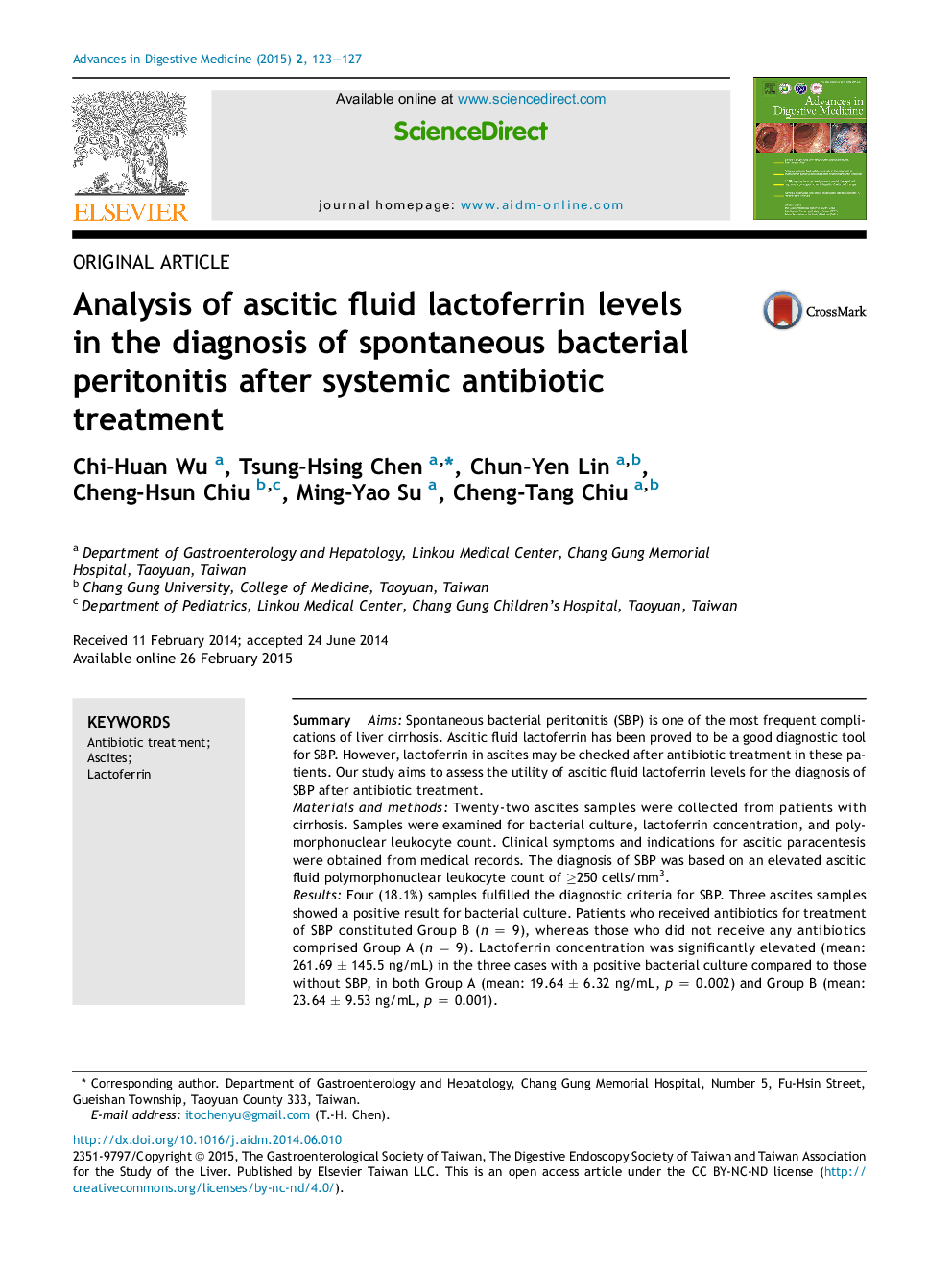| Article ID | Journal | Published Year | Pages | File Type |
|---|---|---|---|---|
| 3278522 | Advances in Digestive Medicine | 2015 | 5 Pages |
SummaryAimsSpontaneous bacterial peritonitis (SBP) is one of the most frequent complications of liver cirrhosis. Ascitic fluid lactoferrin has been proved to be a good diagnostic tool for SBP. However, lactoferrin in ascites may be checked after antibiotic treatment in these patients. Our study aims to assess the utility of ascitic fluid lactoferrin levels for the diagnosis of SBP after antibiotic treatment.Materials and methodsTwenty-two ascites samples were collected from patients with cirrhosis. Samples were examined for bacterial culture, lactoferrin concentration, and polymorphonuclear leukocyte count. Clinical symptoms and indications for ascitic paracentesis were obtained from medical records. The diagnosis of SBP was based on an elevated ascitic fluid polymorphonuclear leukocyte count of ≥250 cells/mm3.ResultsFour (18.1%) samples fulfilled the diagnostic criteria for SBP. Three ascites samples showed a positive result for bacterial culture. Patients who received antibiotics for treatment of SBP constituted Group B (n = 9), whereas those who did not receive any antibiotics comprised Group A (n = 9). Lactoferrin concentration was significantly elevated (mean: 261.69 ± 145.5 ng/mL) in the three cases with a positive bacterial culture compared to those without SBP, in both Group A (mean: 19.64 ± 6.32 ng/mL, p = 0.002) and Group B (mean: 23.64 ± 9.53 ng/mL, p = 0.001).ConclusionAfter systemic antibiotic treatment, elevated lactoferrin levels in the ascites of cirrhotic patients appear to be a promising predictor for the presence of SBP having positive ascitic bacterial culture.
